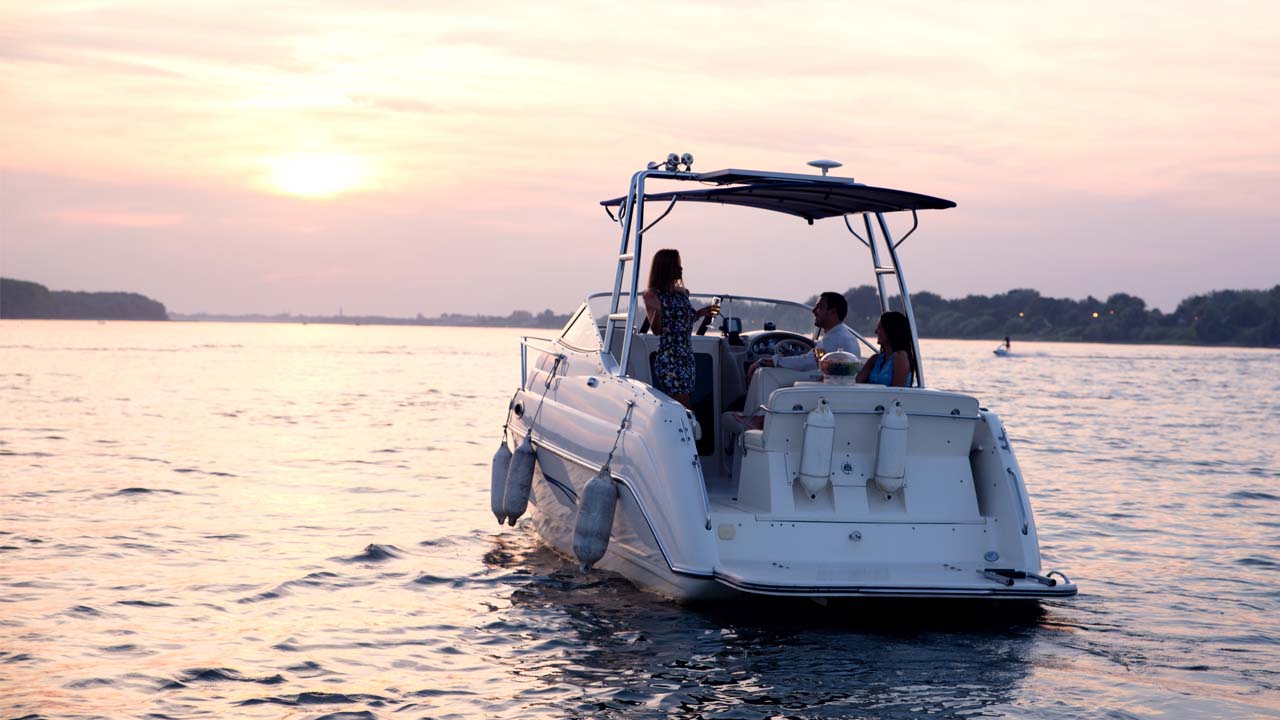Demand for watercraft has not remained afloat since the pandemic took hold, it’s soared.
In fact, estimates from the Boating Industry Association say new and used boat sales are up over 50% and 20% respectively.
Nodifi investigates.
Firstly, the stats
- The Australian marine industry’s turnover reached $8.835 billion in 2021, up from $8.65bn in 2019
- Around one in ten adult Australians have a boat licence
- The rise is mainly from recreational (consumer) demand as 85% of boats in Australia are less than 6 metres in length
- 70% of consumer boats are used for some form of fishing
- Australia’s most popular boat is still the classic aluminum tinny
- For the average cabin-free motorised fishing boat, prices range from $15,000 used to $35,000 new
In the wake of COVID
Similarly to caravans, boat sales have seen huge increases since the initial stranglehold of the pandemic eased in mid 2020.
Industry experts put this down to a few reasons.
One being that private boats offer a safe and isolated opportunity for recreational activities. Unlike family holidays requiring air travel, cruise ships, hotels and the like, boating poses little to no risk of COVID exposure.
Interest in domestic tourism has also been kind to boats. Australians previously spent around $60 billion on international travel each year, a figure that’s understandably sunk (unlike boats). Some of that spending has trickled into watercraft.
Superyachts
Another sometimes overlooked source of dollars flowing into the marine industry is from superyachts. Increasing numbers of Australian owners are shipping their vessels back to Australia from marinas and ports overseas as owners are unable to travel to enjoy holidays on them.
Although superyacht owners are few and far between, shipyards in Queensland in particular are reporting increased demand for maintenance, repairs, upgrades and refurbishings from mega rich clients. Considering this work is typically priced in the 6-figure or even 7-figure range, it doesn’t take many orders for the industry to notice.
International clients have also sent vessels to Australia for similar reasons due to the weaker Australian dollar and high quality of Australian workmanship and facilities – facilities that have had a $100m bolster to meet demand.
Boat sales over the year
The lead up to and the early stages of summer might seem like the prime time for boat sales, but numbers don’t agree.
Data from Nodifi shows that watercraft sales are strongest in Q1 followed by Q3 and Q4 respectively. Going into winter, Q2 sees some drop off.
Other information from industry insiders says that dealers often drop prices in winter (Q3), boosting demand.
Furthermore, the majority of boat shows in Australia take place over the cooler months, such as the Sydney International Boat Show which runs from July 28 – Aug 1 this year.
Adelaide, Melbourne, Brisbane, the Gold Coast and Perth all have major boat shows running from June to September in 2022.
The takeaway is that boat demand isn’t as dictated by seasons as sometimes thought.
The demographic buying boats
Queenslanders are the top boat buyers in Australia, contributing 956,000 licences and 272,000 boat registrations in 2021.
The state with the second numbers last year was NSW with 533,000 licences issued and 240,000 registrations.
In total, over 925,000 boats were registered in Australia in 2021 – a number which doubles when paddle craft and sailing dinghies are counted.
Note that in most states and territories, all watercraft powered by a motor, including sailing and rowboats fitted with an auxiliary engine, typically need to be registered.
Personal Watercraft (PWCs), which include jet skis, are particularly attractive to weekenders who aren’t into fishing. Jet ski registrations are up 36% since 2015 in Victoria alone.
Other states report similar increases.
NSW recorded a 92% increase in new jet ski licences from May 2020 to March, 2021 according to a report in the Port Stephens Examiner.
Satisfying clients looking for watercraft
Firstly, secured consumer rates start from 3.99%.
Rates are dictated by client profile, including credit score, and both the age and cost of the boat.
Consumer loan terms range from 24 to 84 months.
Applicants must be 18 years of age or older and most lenders require a licence to be held.
Common rates per client profile
- Asset backed / high & stable income / excellent credit score (800+): 3.99% – 7.99%
- Asset backed / stable income / average credit score (550): 5.99% – 12.99%
- Renting / part-time work / low credit score (400 and below): 13%+
*Other factors may alter your client’s rate. Reach out to your Relationship Manager for specifics.
Documents and information
Typically, the following is required
- Proof of income and employment details (some forms of Centrelink payments are accepted)
- Signed privacy consent
- Monthly net income vs expenses
- Identification / personal details
- Asset details
- In most cases, an inspection on private sale watercraft
Some lenders may require bank statements and additional documentation.
Make sure to access the ‘scenario lodging tool’ as it helps brokers note required documents, borrow amounts and rates per client specifics.
Secured vs unsecured
Similarly to car loans, the majority of boat loans are secured to the asset. This means a HIN (Hull Identification Number) is required as well as engine serial numbers and trailer identification numbers.
Secured boat loans typically attract lower rates than an unsecured personal loan used to purchase watercraft.
An unsecured loan for a boat may suit borrowers who require additional funds for repairs, a trailer, modifications or an older vessel.
Although policies differ from lender to lender, the maximum age at the end of a secured loan term for an asset is usually 20 years, however, financing older assets is possible.
Personal loans for watercraft can suit clients looking for wind-powered recreational craft like sailboards or mini catamarans.
New vs Used
New boats typically attract lower interest rates due to less risk attached. If your client is purchasing a new boat, dealers are able to assist with registration and required documentation.
Used boats, like used cars, have seen increasing demand since COVID hit which has naturally caused prices to rise.
Lenders typically require watercraft sold by private sellers to be formally inspected.
Nodifi can assist with new, used, dealer and private sale watercraft.
Commercial boat loans
Rates start from 5.95%.
Commercial boats typically suit commercial fishing entities and tour operators. Some clients may require additional funds for things like fishing equipment, fitouts and signage. Depending on the circumstances, some lenders on Nodifi’s panel can arrange this.
Typically, commercial clients are required to hold an active ABN and company applications to have GST registration.
Chattel mortgages are available and some clients may qualify for low-doc loans, meaning minimal financial documents needed.
Things to be wary of
Consumer boat loans are usually listed as one purchase, meaning a trailer and/or motor can’t be purchased from different entities within the same loan.
All applicants must have a fixed address on land, meaning they can’t live on the vessel they are purchasing. Houseboats can be financed, however, not to live in permanently.
Although uncommon, Nodifi has the potential to assist with large-ticket yachts capable of international travel.
Boat finance in summary
With the huge waves that boats are making all over Australia, it’s likely most brokers will have clients looking to get out on the water.
Offering these products and letting your clients know that there are competitive rates, simple processes and products to suit most buyers is a great string of income.
If you’re not familiar with brands, makes and models, not to worry. Generally, financing watercraft only requires brokers to obtain information standard with any form of credit along with the year, name and serial numbers of goods purchased, not unlike vehicles.
Reach out to your Relationship Manager if you’d like to discuss boat finance or anything else.




